Seal pups in need
The 2023 SW UK pupping season kicked off in earnest around the same time as last year in the last week of August (with a trickle of pups prior to that). This is EARLY! Records seem to suggest that the pupping season is moving forwards by a few days each year, now overlapping with our peak tourist season. One mum ‘Scream’ had her pup 25 days earlier in 2023 compared to 2017 with an average shift of around 4 days a year earlier. This means seal pups are in need of our help.
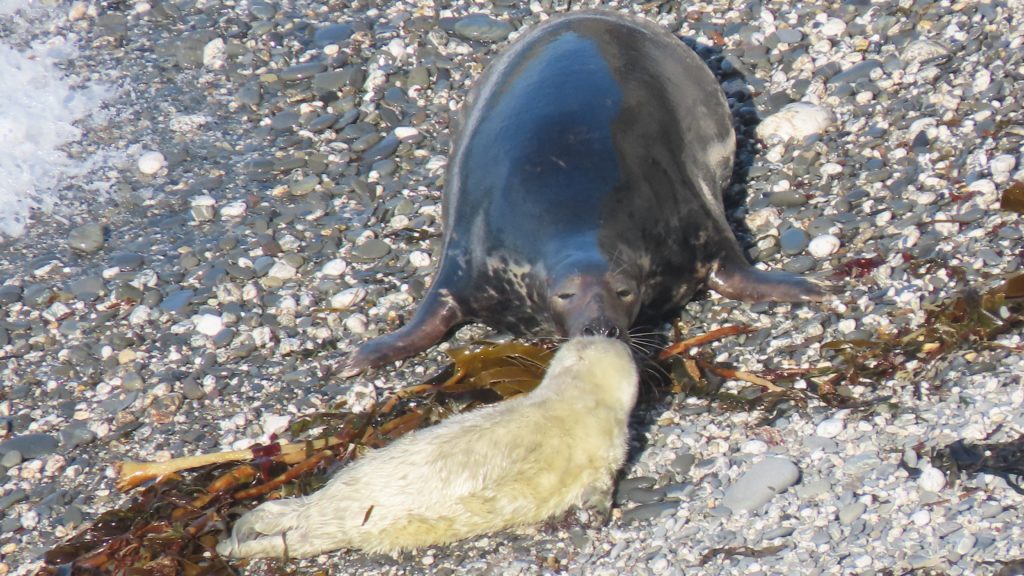
With worrying signs from Scotland and the SW that mortality rates are high (see below for the range of threats experienced these day), all seals, but especially pups, need our help now!
So what can we all do?
Firstly we need to follow the Defra Marine and Coastal Wildlife Code.
But let’s keep it simple… we all need to stay 100m+ away from seals on land and in the sea, stay on paths and off beaches where seals are sleeping.
Seals only spend 20% of their time on land and sleep is vital to their health and wellbeing (as it is to us). If seals are awake, alert and looking at us, then they are aware of our presence and are wasting precious ‘survival vital’ energy! This is most true for pups:
Day 1 sees a pup weak and disorientated with developing motor skills. Their tummy’s are small, so pups have more frequent short feeds.
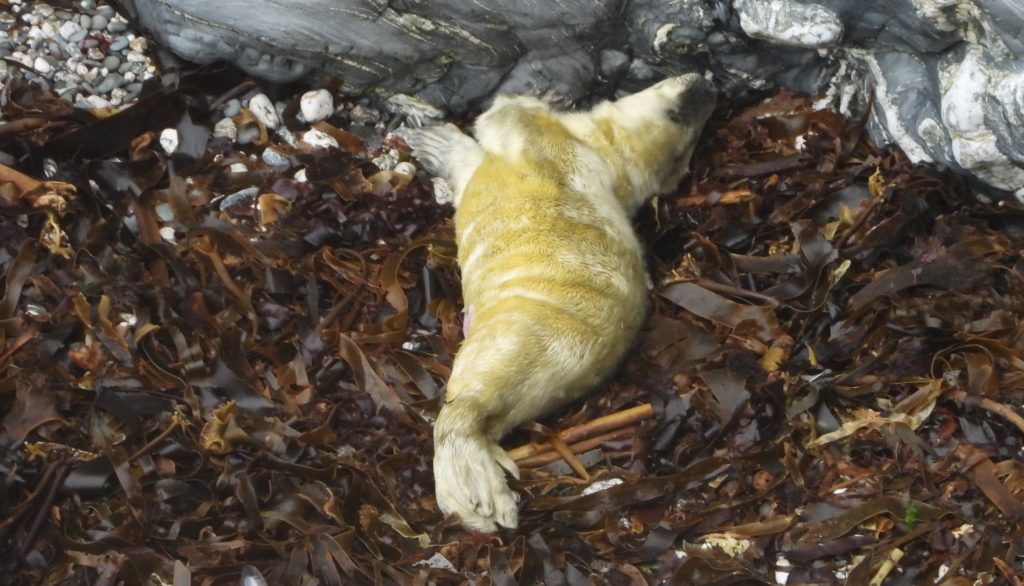
By the end of week 1, a well-fed pup will have lost its rolls of skin as it stocks up on fat reserves.
By week 2, pups look like fat torpedoes and feeds are less frequent but last longer.
After 15-21 days, pups need to resemble a fat, bloated barrel to make it through their 1st winter. Every missed feed (as a result of human presence) is 1% of their nursing nutrition lost and reduces their survival chances.
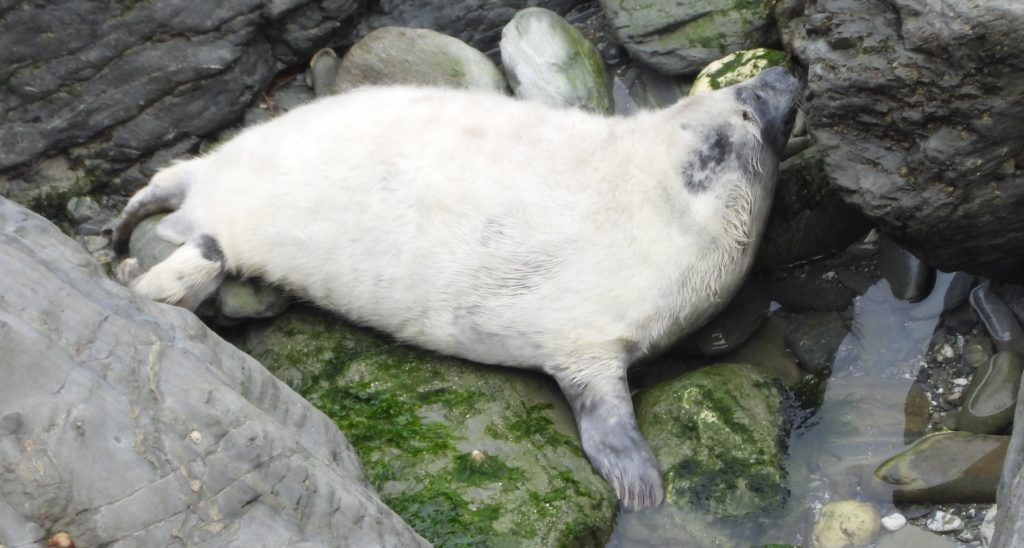
When pups are born on publicly accessible beaches they are most at risk from human disturbance and this is our greatest challenge requiring a humungous team effort. This year has been no exception. After being alerted about a small white coated pup on a publicly accessible beach with high footfall clifftop, we all sprung into action.
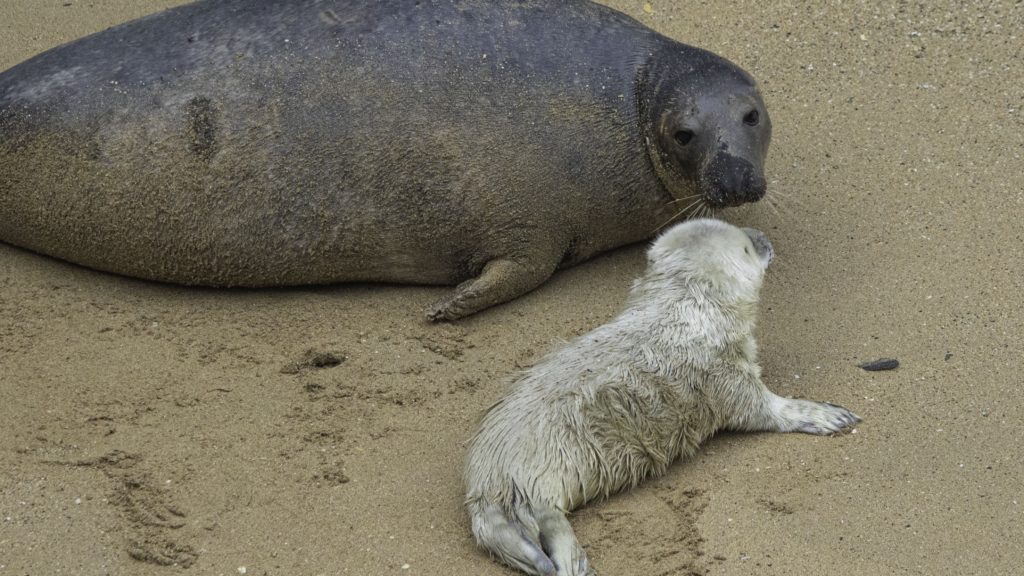
Seal Research Trust, British Divers Marine Life Rescue, the Cornish Seal Sanctuary and Newquay Marine Group volunteers joined forces to be present to engage with members of the public and monitor the mum, pup and beachmaster, to raise awareness of how best to act and help. SRT set up a googlesheet rota covering 10:00 until 20:00 for volunteers to sign up to. Over the next 13 days (the monitoring is still ongoing) we have achieved so much – most importantly being that the pup is thriving and has already fattened into a barrel shape.
In total over 16 days, 35 different volunteers between them donated 228 hours of shifts and engaged with at least 837 members of the public. Our concerns about an overzealous dominant male beachmaster waned (presumably as did his energy levels) leaving mum to feed her pup undisturbed. On day 1, 5 feeds lasted a total of around 22 minutes and by day 11 2 feeds lasted 32 minutes.
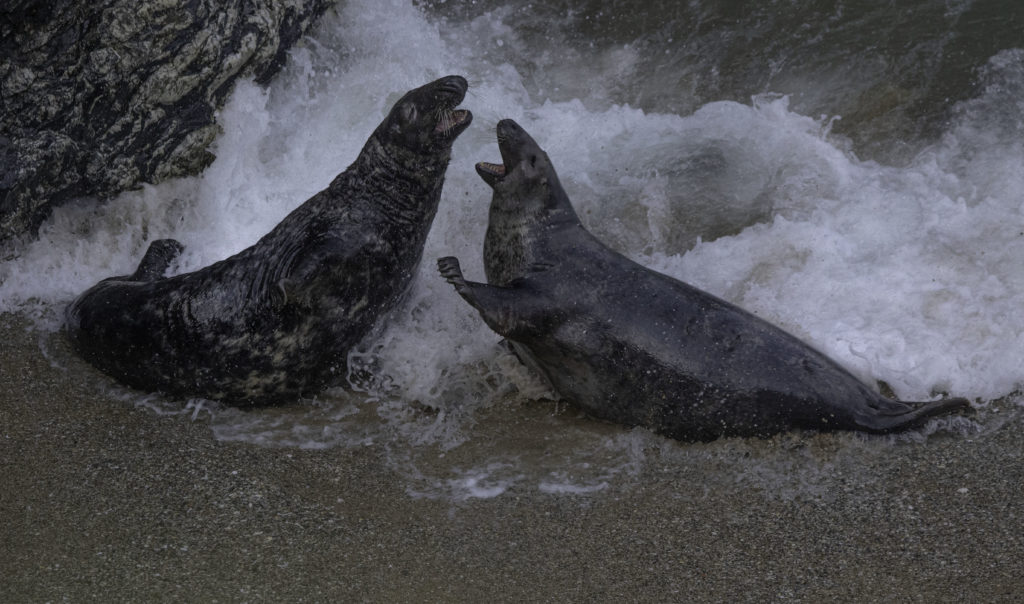
Of course this experience is replicated right around our UK coastline, so if you sea a seal and you are concerned for its welfare, stay 100m away or back out of sight on the path and encourage others kindly to do the same and please ring BDMLR 01825 765546.
This has been an incredible team achievement. Thank you to every single volunteer who has given their time to securing this pup a future – Amanda, Amy, Andrea, Andy, Ash, Chris, Claire, Debbie, Emma C, Emma Co, Emma L, Gill, George, Grace J, Grace R, Gwinnie, Jane, Josh, Kirk, Linda, Lizzi, Michaela, Mike, Nick, Nicole, Peter, Sally, Samuel, Seth, Sharon, Terry and Tony. Thanks to Sue, Dan, Lizzi and Jenny for alerting and encouraging volunteers to take part and collate the summary data. We hugely appreciate that the National Trust Rangers also serviced the fence, helping to better manage people on the clifftop. This team effort means this pup will have the chance of surviving the time it takes to teach itself to feed and its 1st winter! THANK YOU ALL!
Need a gift for a loved one that helps support seals too?
More information about impacts seals are currently facing.
Seals are facing increasing challenges in terms of prey availability, bycatch/entanglement, habitat loss, pollution in the form physical (macro and micro) and chemical outflows ranging from industrial, agricultural, transportational and household activities including emerging issues such as pharmaceutical runoff (e.g. painkillers and hormones) and disturbance in additional to all the new issues additional effects associated with climate change.
Climate change impacts on seals include: Warming seas affecting prey distribution; Extreme weather events inundating pupping beaches separating maternally dependent pups and mothers and reducing fecundity following year; Groundswells increasing lost gear increasing entanglement rates; Groundswells disturbing pollutants and contaminants locked in the seabed; Ocean acidification; Toxic algal blooms (domoic acid); Rising sea levels flooding sea caves and haul outs; Increasing rates of coastal erosion with rockfalls injuring or killing seals; Heavy rain and severe hail storms increasing disturbance.
